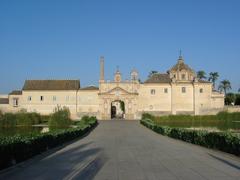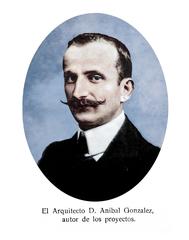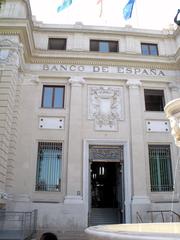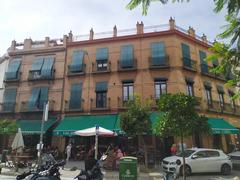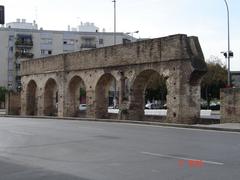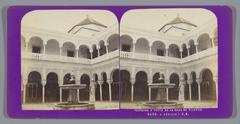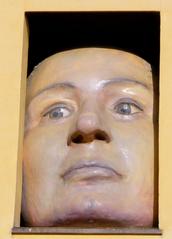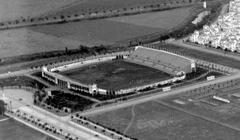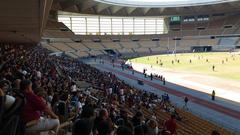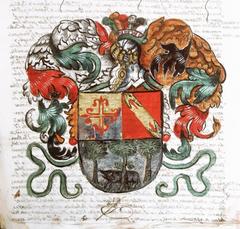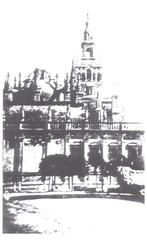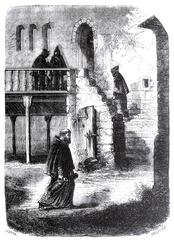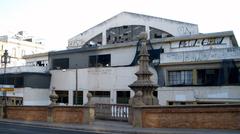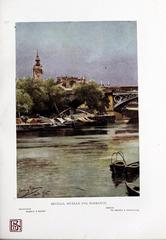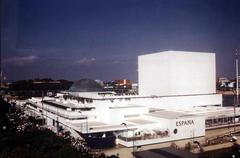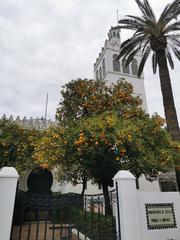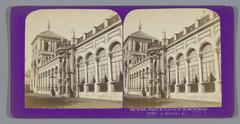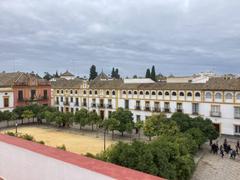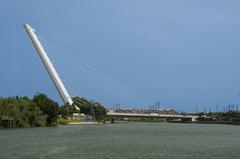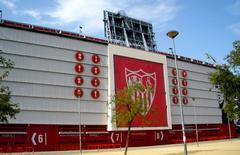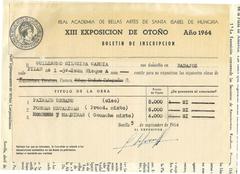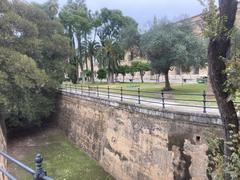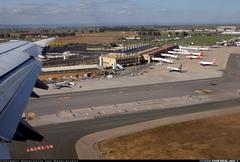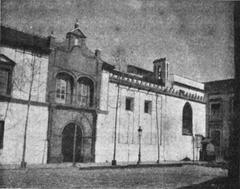Visiting Real Audiencia de Sevilla: Hours, Tickets, History, and Travel Tips
Date: 04/07/2025
Introduction
The Real Audiencia de Sevilla is one of Seville’s most significant historic buildings, intricately woven into the city’s judicial, cultural, and architectural heritage. Established in 1493 as a royal tribunal by the Catholic Monarchs Ferdinand and Isabella, it emerged as the highest court in Andalusia and a central pillar in the legal administration of Spain’s southern provinces and overseas territories. Its rich architectural tapestry—featuring Renaissance, Mudéjar, and Baroque elements—reflects centuries of political evolution and civic artistry.
Positioned on the vibrant Plaza de San Francisco, the Real Audiencia stands among Seville’s UNESCO World Heritage Sites, offering visitors not only a window into the city’s judicial past but also access to some of the finest examples of Spanish civic architecture. Today, while no longer serving as a court, the building functions as a cultural center and museum, housing notable art collections and hosting exhibitions that illuminate Seville’s dynamic legacy.
This detailed guide covers the Real Audiencia de Sevilla’s history, architectural features, visiting hours, ticketing, accessibility, and practical tips—ideal for travelers, history enthusiasts, and anyone keen to explore Seville’s layered history. For the latest updates and additional resources, consult the official Seville tourism websites (turismosevilla.org, Seville City Guide, Seville Tourism).
Historical Foundations: From Medieval to Royal Tribunal
Medieval Origins and Early Development
Following the Christian reconquest of Seville in 1248, King Fernando III established a new judicial order in the city, setting the stage for centuries of legal transformation (turismosevilla.org). By the late 14th century, the Casa Cuadra in the city’s main square served as an early courthouse, marking Seville’s emergence as an administrative hub.
Judicial authority at this time was divided among civil and criminal judges—alcaldes ordinarios and alcaldes mayores—appointed by the city council and the king, alongside the adelantado mayor de Andalucía. This system reflected both municipal autonomy and royal oversight (es.wikipedia.org).
Establishment as a Royal Tribunal
In 1493, the Catholic Monarchs formalized the Audiencia as a collegiate royal tribunal, centralizing judicial authority and curbing the power of local nobility and magistrates (sevillaconfidencial.com). The Audiencia became the highest appellate court in Andalusia; its decisions could only be appealed to the Consejo de Castilla (juntadeandalucia.es).
Legal Reforms and Institutional Expansion
The 16th century saw major reforms. Charles I issued ordinances in 1525, with further modifications by Philip II in 1556 and 1566, defining the court’s organization and jurisdiction (es.wikipedia.org). The Audiencia consisted of a regente (president), oidores (judges), criminal judges, a prosecutor, and various officials, operating through specialized civil, criminal, and fiscal chambers (sevillamisteriosyleyendas.com).
Its jurisdiction extended across Andalusian provinces and, at times, included overseas territories, underscoring Seville’s status as a gateway to the New World (juntadeandalucia.es).
Architectural Evolution and Artistic Heritage
Building History and Renovations
Originally housed in the Casa de Pilatos, the Audiencia moved to the Casa Cuadra on the Plaza de San Francisco. In 1595–1597, a new Renaissance-style building was erected on royal orders, symbolizing the enduring authority of Spanish justice (turismosevilla.org). Over the centuries, the building underwent several renovations: a new façade in 1606, central balcony and portal in 1818, a clock in 1842, and restoration after a major fire in 1918 led by Aníbal González (sevillaconfidencial.com).
Architectural Styles and Influences
- Mudéjar Legacy: The Audiencia incorporates Mudéjar elements—horseshoe arches, geometric azulejos tilework, and carved wooden ceilings—reflecting Seville’s Islamic past and Spanish Christian fusion (Seville City Guide).
- Renaissance Features: The façade is proportioned with Renaissance clarity: pilasters, cornices, and balanced window arrangements evoke Italian influence (Indie Traveller).
- Baroque Additions: Post-1755 earthquake, Baroque flourishes—elaborate stucco, ornate cornices, and dynamic compositions—were introduced during repairs (Indie Traveller).
Decorative and Artistic Details
- Azulejos: Stunning glazed ceramic tiles line walls, floors, and ceilings, featuring geometric, floral, and heraldic motifs (Seville City Guide).
- Courtyards and Patios: The building’s central courtyard, with arcades and fountains, provides light and tranquil ambiance, echoing Roman and Islamic prototypes (Indie Traveller).
- Sculptural Works: Reliefs and painted panels depict allegories of Justice and Law, while heraldic shields and emblems reinforce royal authority throughout the complex.
Civic Role and Urban Integration
Symbolism and Civic Identity
The Audiencia’s heraldic emblems—Spanish crown, Seville’s coat of arms—are found on façades and interior panels, constantly reaffirming the building’s role as a seat of royal justice (Seville City Guide). Ornamentation such as scallop shells and classical motifs reference Seville’s role as a hub of pilgrimage and cultural exchange.
Relationship to Historic Landmarks
Strategically located in the city center, the Audiencia is flanked by the Seville Cathedral, the Alcázar, and the Archivo General de Indias. This proximity underscores its importance in Seville’s urban fabric and ceremonial life.
Influence on Andalusian Architecture
The Audiencia’s blend of arcades, tilework, and courtyards inspired later civic buildings across Andalusia, shaping the region’s unique architectural identity.
Modern Transformation and Legacy
19th–20th Century Changes
Constitutional reforms in the 19th century transformed the Audiencia into a territorial court. Its judicial functions moved in 1972, and the building became the headquarters for financial and cultural institutions, notably Fundación Cajasol. Today, it is a vibrant cultural center showcasing art by Murillo, Gonzalo Bilbao, Carmen Laffón, and others (sevillaconfidencial.com).
Preservation Efforts
Continuous restoration protects the Audiencia’s structural and artistic integrity. Projects have focused on stabilizing the building, conserving azulejos, and restoring historic woodwork (Indie Traveller).
Visiting the Real Audiencia de Sevilla
Hours and Admission
- Opening Hours: Tuesday to Sunday, 10:00 AM–6:30 PM. Closed Mondays and select holidays.
- Tickets: General admission €8–€12; discounts for students, seniors, children. Entry is free for EU citizens under 25 and Seville residents on select days. Tickets can be purchased online or at the entrance (Official Tourism Site).
- Guided Tours: Available daily in multiple languages; advance booking recommended during high season.
Accessibility
The building is wheelchair accessible, with ramps and elevators for most public areas. Visitor services can accommodate special needs upon request (Seville City Guide).
Visitor Experience and Practical Tips
- Best Time to Visit: Early morning or late afternoon for optimal lighting and fewer crowds.
- Dress Code: Modest attire is recommended due to the building’s civic significance.
- Photography: Non-flash photos are allowed in most areas; check for restrictions in archives or special exhibitions.
- Duration: Allow 1–1.5 hours for a standard tour.
Conservation and Visitor Etiquette
Be mindful of ongoing preservation work and respect restricted areas. Support conservation by following building guidelines and considering a donation.
Nearby Attractions and Travel Advice
- Seville Cathedral and Giralda: Spain’s largest Gothic cathedral is just steps away (Seville Cathedral).
- Archivo General de Indias: UNESCO-listed archive housing colonial documents (Archivo General de Indias).
- Real Alcázar: A masterpiece of Mudéjar architecture within walking distance.
Plaza de San Francisco bustles with local life, markets, and festivals, especially during Semana Santa and Feria de Abril (touristplaces.guide). Public transport options are plentiful, but walking is often the best way to explore the historic center.
Frequently Asked Questions (FAQ)
Q: What are the Real Audiencia de Sevilla’s visiting hours?
A: Tuesday to Sunday, 10:00 AM–6:30 PM. Closed Mondays.
Q: How much do tickets cost?
A: €8–€12 for adults; discounts and free entry for eligible groups.
Q: Is the building wheelchair accessible?
A: Yes, with ramps and elevators.
Q: Are guided tours available?
A: Yes, available daily in multiple languages. Advance booking is recommended.
Q: Can I take photographs inside?
A: Non-flash photography is usually permitted, except in some areas.
Q: Are there events or exhibitions?
A: Yes, check the official website for current shows and cultural events.
Key Dates and Milestones
- 1248: Christian reconquest and initial judicial order.
- 1493: Establishment of the royal tribunal.
- 1525, 1556, 1566: Major legal reforms and court expansion.
- 1595–1597: Construction of the Renaissance building.
- 1812–1834: Transition to territorial court under constitutional reforms.
- 1918: Fire and restoration.
- 1972: Conversion to cultural center.
Plan Your Visit
To make the most of your trip:
- Book tickets in advance, especially for guided tours.
- Arrive early or late to avoid crowds.
- Explore nearby UNESCO World Heritage Sites.
- Use the [Audiala app] for digital guides and event updates.
For current information, check turismosevilla.org, Seville City Guide, and Seville Tourism.
Sources and Further Reading
- Turismo Sevilla – Real Audiencia de Sevilla
- Seville City Guide
- Grupo US – Cultural and Judicial Importance
- Britannica – Seville
- UNESCO – Seville World Heritage
- Seville Tourism Official Site
- Sevilla Confidencial
- Junta de Andalucía Archives
- Indie Traveller – Seville Travel Guide
- Archivo General de Indias
- touristplaces.guide
